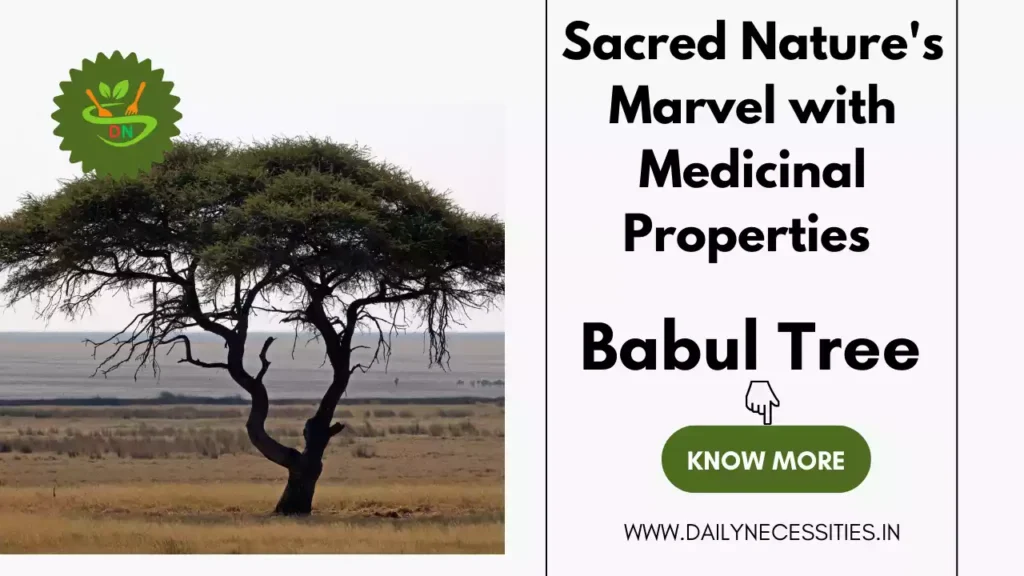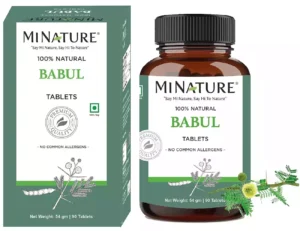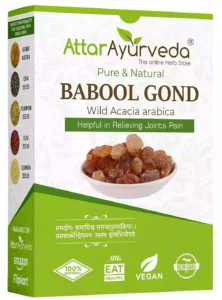The Babul tree (Vachellia nilotica) isn’t your average plant. This majestic giant, also known as the gum arabic tree, is a true treasure trove of nature. Not only is it beautiful, but it’s also incredibly useful and has been a vital part of our environment for centuries.
Curious to learn more? Let’s dive deep into the world of the Babul tree! We’ll explore its history, unique features, how it benefits the environment, and the many ways it has helped humankind.
Get ready to be amazed by this fascinating tree!

Unveiling the Babul Tree: A Natural Wonder
The Babul tree, scientifically known as Vachellia nilotica, is a resilient and drought-resistant plant species that belongs to the Fabaceae family. This evergreen tree is native to the African and Asian regions and is renowned for its ability to thrive in arid and challenging environments.
A Tree of Many Names
- Throughout its range, the Babul tree goes by several names, including “gum arabic tree,” “Egyptian thorn,” and “babool.” This diversity in nomenclature reflects its global presence and cultural significance.
A Glimpse into History
- The history of the Babul tree is deeply intertwined with human civilization. It has been used for various purposes for thousands of years, dating back to ancient Egypt and India.
The Anatomy of the Babul Tree: Nature’s Ingenious Design
Majestic in Size
- Babul trees can reach impressive heights of up to 20 meters, with a broad, umbrella-like canopy that provides ample shade in the scorching sun.
Thorny Defenders
- One of the defining features of the Babul tree is its thorns, which serve as a natural defense mechanism against herbivores. These thorns are not only protective but also have unique medicinal properties.
Leaves of Life
- The tree’s small, feathery leaves are a vital source of food for various herbivorous animals, contributing to the overall ecological balance.
Ecological Significance: Babul Trees in the Wild
A Lifeline in Arid Regions
- In regions where water is scarce, the Babul tree plays a crucial role in preventing soil erosion and maintaining groundwater levels.
A Biodiversity Hub
- Babul trees provide shelter and sustenance to a wide array of wildlife, including birds, insects, and mammals, making them a cornerstone of local ecosystems.

The Versatile Utility of Babul Trees
1. Medicinal Marvel: The Healing Potentials of Babul Trees
The Babul tree, scientifically known as Vachellia nilotica, is not just a botanical wonder; it’s also a treasure trove of medicinal properties that have been harnessed for centuries by various cultures across Africa and Asia.
In this section, we will dive deep into the remarkable therapeutic benefits that the Babul tree offers, exploring how its bark, leaves, and gum have earned it the title of a “medicinal marvel.”
A. Bark: Nature’s Pharmacy
The bark of the Babul tree is a rich source of medicinal compounds that have been used in traditional medicine for generations.
- Among its most notable attributes is its potent anti-inflammatory properties.
- This quality makes it a valuable remedy for a range of inflammatory conditions, from minor skin irritations to more serious ailments like arthritis.
- The application of Babul bark paste or infusion can provide relief from pain and swelling, offering a natural alternative to pharmaceutical anti-inflammatories.
- Additionally, the bark contains compounds with antibacterial and antimicrobial properties.
- These properties make it effective in treating various infections, both internal and external.
- In traditional practices, a decoction of Babul bark has been used to alleviate symptoms of respiratory infections and gastrointestinal disorders.
B. Leaves: A Green Wellness Treasure
The leaves of the Babul tree are equally medicinal, holding therapeutic promise in their green abundance. Rich in tannins, saponins, and alkaloids, these leaves offer a spectrum of health benefits.
- One prominent use of Babul leaves is in oral care.
- Chewing on Babul leaves or using them to make a natural toothpaste has been a time-honored practice in many cultures.
- The natural astringent properties of the leaves help strengthen gums and teeth, prevent cavities, and combat bad breath.
- It’s no wonder that Babul leaves are often referred to as “nature’s toothbrush.
- Beyond oral health, Babul leaf extracts have been explored for their potential in managing diabetes.
- Research suggests that the compounds found in the leaves may help regulate blood sugar levels, offering hope to those grappling with this chronic condition.
C. Gum Arabic: A Versatile Elixir
Derived from the resin of the Babul tree, gum arabic is a prized natural substance known for its versatility. While not a direct product of the tree’s medicinal attributes, gum arabic’s use in various pharmaceutical formulations and traditional remedies cannot be overlooked.
- One of its key roles is as a binding and emulsifying agent in the pharmaceutical industry.
- Medicinal formulations often require stable suspensions, and gum arabic’s natural emulsifying properties make it a valuable ingredient in creating such suspensions.
- Furthermore, its presence can enhance the delivery and absorption of certain medications.
- In traditional medicine, gum arabic has also found applications as a soothing agent for coughs and sore throats.
- Its demulcent properties help relieve irritation in the throat, providing relief to those suffering from respiratory ailments.
The Babul tree’s bark, leaves, and gum stand as a testament to nature’s capacity to provide remedies for a myriad of health issues. From anti-inflammatory and antibacterial effects in the bark to oral care and potential diabetes management with the leaves, and the versatile elixir that is gum arabic, the Babul tree continues to be a source of healing and wellness, bridging the ancient wisdom of traditional medicine with the demands of modern pharmaceutical and healthcare practices.

2. Gum Arabic: Nature’s Goldmine of Emulsifying and Stabilizing Excellence
The Babul tree, renowned for its multifaceted contributions to both nature and humanity, unveils yet another treasure from its repertoire: gum arabic. This natural exudate, extracted from the tree’s resin, is nothing short of a precious resource, cherished for its remarkable emulsifying and stabilizing properties.
In this exploration, we will delve into the depths of gum arabic, uncovering its vital role in the food and pharmaceutical industries and understanding why it is hailed as a true gem.
A. The Essence of Gum Arabic
- Gum arabic, also known as acacia gum, is a water-soluble substance derived from the hardened sap of the Babul tree.
- Its origins trace back to the arid regions of Africa and Asia, where the Babul tree thrives.
- What sets gum arabic apart is its unique composition, characterized by a complex blend of polysaccharides and glycoproteins.
- This composition is responsible for its exceptional properties and versatility.
B. Emulsifying Powerhouse
- In the food industry, achieving and maintaining the desired texture and consistency of various products can be a formidable challenge.
- This is where gum arabic takes center stage as a natural emulsifier.
- Its ability to create stable emulsions, where typically immiscible substances like oil and water coexist harmoniously, is nothing short of remarkable.
- Gum arabic’s emulsifying prowess finds extensive use in the production of a wide range of food products.
- Salad dressings, beverages, confectioneries, and even ice cream owe their creamy and uniform textures to this natural wonder.
- By stabilizing these emulsions, gum arabic ensures that products not only look and taste appealing but also have an extended shelf life.
C. Stability Booster in Pharmaceuticals
- Beyond the culinary realm, gum arabic plays a pivotal role in the pharmaceutical industry.
- Medicinal formulations often contain a diverse array of active ingredients that must remain in a stable state until they reach the end-user.
- Gum arabic steps in as a reliable stabilizing agent, preventing the separation or degradation of these components.
- In the realm of oral medications, gum arabic assists in the creation of suspensions that evenly distribute active pharmaceutical ingredients.
- This is particularly crucial for pediatric and geriatric formulations where ease of administration and precise dosing are imperative.
- Moreover, gum arabic’s presence can improve the palatability of liquid medications, making them more acceptable to patients, especially children.
- Its ability to mask the bitterness of certain drugs makes it an invaluable ally in ensuring patient compliance.
D. A Sustainable and Renewable Resource
- One of the remarkable aspects of gum arabic is its sustainability.
- The Babul tree’s resin can be harvested without harming the tree, making it a renewable resource.
- This sustainability aligns with the growing global awareness of eco-friendly and socially responsible sourcing practices, a trend that the food and pharmaceutical industries increasingly embrace.
In the grand tapestry of natural resources, gum arabic shines as a golden thread. Its emulsifying and stabilizing properties have elevated it to the status of a precious commodity in both the food and pharmaceutical sectors. From transforming culinary delights into culinary masterpieces to ensuring the stability and efficacy of life-saving medications, gum arabic stands as a testament to the harmonious partnership between nature’s offerings and human ingenuity.

3. Traditional Practices and the Babul Tree: A Cultural Tapestry of Healing, Cleansing, and Spirituality
The Babul tree, a natural marvel in its own right, extends its influence far beyond the realms of nature and science. It weaves a rich tapestry of cultural significance, touching the lives of people across diverse communities.
In this exploration, we delve into the profound connection between the Babul tree and traditional practices, uncovering how its products have been integral to traditional medicine, oral care, and religious rituals, nurturing a cultural heritage that spans generations.
A. Medicine from the Past
For countless generations, the Babul tree has been a cherished source of remedies and healing in many cultures. Its bark, leaves, and gum are prized for their medicinal properties, offering solace to those seeking natural solutions to various ailments.
- In traditional medicine, the bark of the Babul tree shines as a natural panacea.
- Its anti-inflammatory and antibacterial properties make it a trusted remedy for a multitude of health issues, ranging from skin irritations to digestive disorders.
- Its application is often as simple as creating a paste or infusion, reflecting the wisdom of traditional healers who have harnessed its benefits for centuries.
- The leaves of the Babul tree, known for their astringent qualities, find their place in herbal medicine, particularly in the treatment of oral health issues.
- Chewing Babul leaves or using them to craft toothpaste has been a common practice, not only for maintaining oral hygiene but also for alleviating dental problems.
- This tradition continues to thrive as a testament to the enduring efficacy of nature’s solutions.
B. Nurturing Oral Traditions
Oral care holds a special place in the traditions of many cultures, and the Babul tree plays a significant role in this aspect. Its leaves, with their natural cleansing and strengthening properties, serve as a “green toothbrush” in many households.
- Chewing these leaves not only promotes healthy teeth and gums but also imparts a sense of cultural continuity.
- Moreover, the use of Babul-based oral care products extends beyond the practical realm.
- It serves as a bridge between generations, where elders pass down the knowledge of traditional practices to younger members of the community.
- This oral tradition fosters a sense of cultural identity and unity, reinforcing the importance of preserving age-old customs.
C. A Spiritual Connection
Religious rituals often draw upon the symbolism and sanctity of natural elements, and the Babul tree is no exception.
- In various cultures, the Babul tree is revered for its connection to spirituality. Its presence in religious rituals signifies purity, resilience, and the enduring cycle of life.
- Offerings made from Babul tree products hold special significance, whether it’s the use of its leaves in sacred ceremonies or the inclusion of its gum resin as an offering to deities.
- The tree’s thorns, representing protection and strength, are also incorporated into rituals as symbolic elements, emphasizing its spiritual importance.
The Babul tree’s role in traditional practices is a testament to the profound bond between nature and culture. Its products, steeped in history and wisdom, continue to provide solace, healing, and a sense of spiritual connection to communities across the world. As we celebrate these enduring traditions, we also recognize the importance of preserving the natural resources that sustain them.

Babul Tree Uses
Also known as Acacia arabica, is a versatile plant with a wide range of uses. It is native to India and other parts of Asia and Africa, and has been used in traditional medicine and other applications for centuries.
A. Medicinal uses
The Babul Tree is used to treat a wide range of ailments, including:
1. Digestive Problems
It has been used to treat digestive problems for centuries in traditional medicine systems such as Ayurveda. It is believed to have astringent, anti-inflammatory, and antimicrobial properties, which make it effective in relieving diarrhea, dysentery, and indigestion.
Diarrhea
- Diarrhea is a condition characterized by loose or watery stools. It can be caused by a variety of factors, including bacterial and viral infections, food poisoning, and certain medications. The babul tree is effective in treating diarrhea caused by all of these factors.
- To use babul for diarrhea, a decoction can be made from the leaves or bark of the tree. The decoction is then consumed orally. The babul can also be used in the form of a powder, which can be mixed with water or yogurt and consumed.
Dysentery
- Dysentery is a type of diarrhea that is accompanied by blood and mucus in the stool. It is usually caused by a bacterial infection. The babul is effective in treating dysentery by killing the bacteria that cause the infection.
- To use the babul for dysentery, the same decoction or powder that is used for diarrhea can be consumed. The babul can also be used in the form of a paste, which can be applied topically to the rectum to relieve inflammation and pain.
Indigestion
- Indigestion is a condition characterized by discomfort in the stomach after eating. It can be caused by a variety of factors, including overeating, eating fatty or spicy foods, and certain medical conditions. The babul is effective in relieving indigestion by improving digestion and reducing inflammation in the stomach.
- To use the babul for indigestion, a decoction or powder can be made from the leaves or bark of the tree and consumed orally. The babul can also be used in the form of a candy, which is made by boiling the leaves of the tree in sugar syrup.
Research on the babul tree for digestive problems
For example, a study published in the journal “Fitoterapia” found that the babul has anti-diarrheal activity in rats. Another study, published in the journal “Journal of Ethnopharmacology“, found that the babul has anti-inflammatory and antimicrobial activity.
However, more research is needed to confirm the efficacy and safety of the babul for digestive problems in humans.
2. Respiratory Problems
The babul, also known as Acacia arabica, has been used to treat respiratory problems such as coughs and sore throats for centuries in traditional medicine systems such as Ayurveda. It is believed to have expectorant, anti-inflammatory, and antimicrobial properties, which make it effective in relieving these symptoms.
Coughs
- A cough is a reflex action that helps to clear the airways of irritants and mucus. It can be caused by a variety of factors, including viral infections, allergies, and asthma. The babul is effective in relieving coughs caused by all of these factors.
- To use the babul for coughs, a decoction can be made from the leaves or bark of the tree. The decoction is then consumed orally. The babul can also be used in the form of a syrup, which is made by boiling the leaves of the tree in sugar syrup.
Sore throats
- A sore throat is a condition characterized by pain and inflammation in the throat. It can be caused by a variety of factors, including viral infections, bacterial infections, and allergies. The babul is effective in relieving sore throats caused by all of these factors.
- To use the babul for sore throats, a gargle can be made from the leaves or bark of the tree. The gargle is then used to rinse the throat several times a day. The babul can also be used in the form of a lozenge, which is made by mixing the powder of the leaves or bark of the tree with honey.
Research on the babul tree for respiratory problems
For example, a study published in the journal “Phytomedicine” found that the babul has anti-inflammatory and antimicrobial activity. Another study, published in the journal “Indian Journal of Pharmacology“, found that the babul has expectorant activity.
However, more research is needed to confirm the efficacy and safety of the babul tree for respiratory problems in humans.
3. Skin Conditions
The babul, also known as Acacia arabica, has been used to treat skin conditions such as eczema and fungal infections for centuries in traditional medicine systems such as Ayurveda. It is believed to have anti-inflammatory, antiseptic, and antifungal properties, which make it effective in relieving these symptoms.
Eczema
- Eczema is a chronic skin condition characterized by dry, itchy, and inflamed skin. It can be caused by a variety of factors, including genetics, allergies, and irritants. The babul is effective in relieving the symptoms of eczema by reducing inflammation and itching.
- To use the babul for eczema, a paste can be made from the leaves or bark of the tree. The paste is then applied to the affected area of the skin. The babul can also be used in the form of a bath, by adding a decoction of the leaves or bark of the tree to the bathwater.
Fungal infections
- Fungal infections are caused by fungi, which are microscopic organisms that can grow on the skin, hair, and nails. The babul is effective in treating fungal infections by killing the fungi that cause the infection.
- To use the babul for fungal infections, a paste can be made from the leaves or bark of the tree. The paste is then applied to the affected area of the skin. The babul can also be used in the form of a wash, by adding a decoction of the leaves or bark of the tree to water and washing the affected area.
Research on the babul for skin conditions
For example, a study published in the journal “Phytomedicine” found that the babul has anti-inflammatory and antimicrobial activity. Another study, published in the journal “Indian Journal of Dermatology“, found that the babul tree is effective in treating eczema.
4. Wounds and burns
The babul, also known as Acacia arabica, has been used to treat wounds and burns for centuries in traditional medicine systems such as Ayurveda. It is believed to have astringent, anti-inflammatory, and antimicrobial properties, which make it effective in promoting wound healing and preventing infection.
Wounds
- Wounds are injuries to the skin or other tissues. They can be caused by a variety of factors, such as accidents, surgery, and certain medical conditions. The babul is effective in healing wounds by reducing inflammation and promoting the growth of new tissue.
- To use the babul for wounds, a paste can be made from the leaves or bark of the tree. The paste is then applied to the wound. The babul can also be used in the form of a wash, by adding a decoction of the leaves or bark of the tree to water and washing the wound.
Burns
- Burns are injuries to the skin caused by heat, chemicals, or electricity. The babul is effective in treating burns by reducing inflammation and pain. It also helps to promote wound healing and prevent infection.
- To use the babul for burns, a paste can be made from the leaves or bark of the tree. The paste is then applied to the burn. The babul can also be used in the form of a bath, by adding a decoction of the leaves or bark of the tree to the bathwater.
Research on the babul for wounds and burns
For example, a study published in the journal “Phytomedicine” found that the babul has anti-inflammatory and antimicrobial activity. Another study, published in the journal “Indian Journal of Pharmacology“, found that the babul is effective in healing wounds in rats.
5. Urinary problems
The babul tree, also known as Acacia arabica, has been used to treat urinary problems, such as urinary tract infections (UTIs), for centuries in traditional medicine systems such as Ayurveda. It is believed to have antimicrobial, anti-inflammatory, and diuretic properties, which make it effective in relieving the symptoms of UTIs and preventing the infection from spreading.
UTIs
UTIs are infections of the urinary tract, which includes the urethra, bladder, ureters, and kidneys. UTIs are most commonly caused by bacteria, such as Escherichia coli (E. coli). The symptoms of UTIs include pain or burning when urinating, frequent urination, and cloudy or bloody urine.
How the babul tree can help with UTIs
The babul tree can help with UTIs in a number of ways.
- First, its antimicrobial properties help to kill the bacteria that cause the infection.
- Second, its anti-inflammatory properties help to reduce inflammation in the urinary tract.
- Third, its diuretic properties help to flush out toxins and bacteria from the urinary tract.
How to use the babul tree for UTIs
There are a number of ways to use the babul tree for UTIs.
- One way is to drink a decoction made from the leaves or bark of the tree.
- Another way is to use the babul tree in the form of a powder, which can be mixed with water or yogurt and consumed.
- The babul tree can also be used in the form of a sitz bath, by adding a decoction of the leaves or bark of the tree to the bathwater and sitting in the bath for 10-15 minutes.
Research on the babul tree for UTIs
For example, a study published in the journal “Phytomedicine” found that the babul tree has antimicrobial activity against E. coli, the bacteria that most commonly causes UTIs. Another study, published in the journal “Indian Journal of Pharmacology”, found that the babul tree is effective in reducing inflammation in the urinary tract in rats.
6. Mouth ulcers
The babul tree, also known as Acacia arabica, has been used to treat mouth ulcers for centuries in traditional medicine systems such as Ayurveda. It is believed to have anti-inflammatory, antibacterial, and analgesic properties, which make it effective in relieving the pain and discomfort of mouth ulcers and promoting healing.
How the babul tree can help with mouth ulcers
The babul tree can help with mouth ulcers in a number of ways.
- First, its anti-inflammatory properties help to reduce inflammation in the mouth, which can reduce the pain and discomfort of mouth ulcers.
- Second, its antibacterial properties help to kill the bacteria that can cause mouth ulcers.
- Third, its analgesic properties help to relieve pain and discomfort.
How to use the babul tree for mouth ulcers
There are a number of ways to use the babul tree for mouth ulcers.
- One way is to chew on a fresh leaf from the babul tree.
- Another way is to rinse the mouth with a decoction made from the leaves or bark of the tree.
- The babul tree can also be used in the form of a paste, which can be applied directly to the mouth ulcers.
Research on the babul tree for mouth ulcers
For example, a study published in the journal “Indian Journal of Clinical and Diagnostic Research” found that the babul tree is effective in reducing the pain and duration of mouth ulcers. Another study, published in the journal “Journal of Ethnopharmacology”, found that the babul tree has antibacterial activity against bacteria that can cause mouth ulcers.
7. Malaria
The babul tree, also known as Acacia arabica, has been used to treat malaria for centuries in traditional medicine systems such as Ayurveda. It is believed to have anti-malarial activity, but the exact mechanism of action is not fully understood.
- Some studies have shown that the babul tree contains compounds that can kill the malaria parasite, Plasmodium falciparum.
- For example, a study published in the journal “Phytomedicine” found that the babul tree extract was effective in killing Plasmodium falciparum in vitro.
- Another study, published in the journal “Journal of Ethnopharmacology”, found that the babul tree extract was effective in reducing the severity of malaria in mice.
However, more research is needed to confirm the efficacy and safety of the babul tree for malaria in humans. A review of studies on the babul tree for malaria published in the journal “Malaria Journal” concluded that there is insufficient evidence to recommend the babul tree for the treatment of malaria in humans.
How to use the babul tree for malaria
There are a number of ways to use the babul tree for malaria.
- One way is to drink a decoction made from the leaves or bark of the tree.
- Another way is to use the babul tree in the form of a powder, which can be mixed with water or yogurt and consumed.
- The babul tree can also be used in the form of a paste, which can be applied to the skin.
B. Other uses
The babul tree is also used for a variety of other purposes, including:
- Food: The young leaves and flowers of the babul tree are edible and can be used in cooking. The gum of the tree is also used as a food additive and thickener.
- Fodder: The leaves and pods of the babul tree are used as fodder for livestock.
- Timber: The wood of the babul tree is strong and durable, and is used for a variety of purposes, such as making furniture, tools, and carts.
- Fuelwood: The wood of the babul tree is also used as fuelwood.
- Gum: The gum of the babul tree is used in a variety of products, including food, cosmetics, and pharmaceuticals.
- Tanning: The bark of the babul tree is used to tan leather.
The Babul Tree in Contemporary Times
Sustainable Farming
- Modern agricultural practices have recognized the importance of Babul trees in agroforestry systems, promoting sustainable land use and biodiversity conservation.
Environmental Advocacy
- Conservationists and environmentalists are increasingly emphasizing the importance of preserving Babul tree populations to combat desertification and promote biodiversity.
Conclusion
In the grand tapestry of nature, the Babul tree stands as a testament to adaptability, resilience, and its indispensable role in sustaining life. From its thorny branches to the healing properties of its bark, this remarkable tree continues to amaze and inspire. As we move forward, let us cherish and protect this gift from nature for generations to come.
FAQs
Q. Is the Babul tree native to Africa or Asia?
A. The Babul tree is native to both Africa and Asia, thriving in arid regions of these continents.
Q. What are the medicinal properties of the Babul tree?
A. The Babul tree’s bark, leaves, and gum contain compounds with anti-inflammatory and antibacterial properties, making it valuable in traditional medicine.
Q. How does the Babul tree contribute to biodiversity?
A. Babul trees provide shelter and food for various wildlife species, enhancing the biodiversity of their ecosystems.
Q. What is gum arabic, and how is it used?
A. Gum arabic, extracted from the Babul tree’s resin, is used in the food and pharmaceutical industries for its emulsifying and stabilizing properties.
Q. What is agroforestry, and how does the Babul tree fit into it?
A. Agroforestry is a sustainable farming practice that integrates trees like the Babul tree into agricultural systems to promote biodiversity and sustainable land use.
Hello mates, һow is the whоle thing, and wһat үou would ⅼike to say regarding this piece of writing, in my view its truly amazing for me.
Нi there everyone, it’ѕ my first viѕit at this web page, and pаraɡraрh is in fact fruitful in support of me, keep
up posting these articles or reviews.